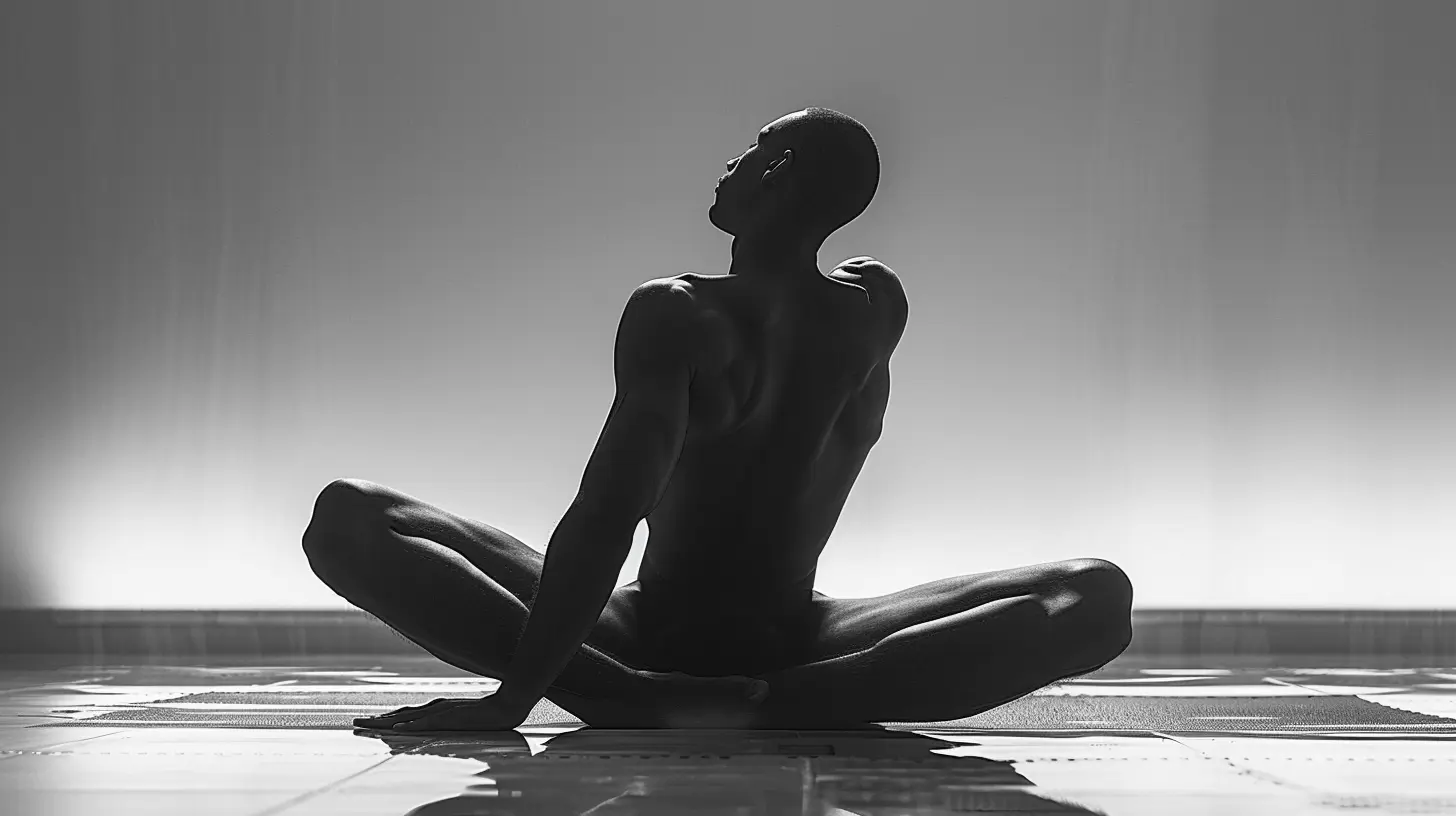The Importance of Flexibility: Stretching Your Way to Success
10 September 2025
Let’s be honest—when we think about hitting the gym or leveling up our athletic game, stretching usually gets benched. It's like the broccoli on your dinner plate—yeah, it's good for you, but meh, not exactly the most exciting part of the meal. But here’s the kicker: flexibility isn’t just about being able to touch your toes without grimacing like you just saw your ex at the grocery store. Nope, it’s the secret sauce to fitness longevity, injury prevention, and, believe it or not, unlocking your full potential as an athlete (or weekend warrior).
So, roll out that dusty yoga mat, shake off the rigidity, and let’s stretch our way to success—one hamstring at a time.
Why Flexibility Deserves More Respect
Think of your muscles like rubber bands. If you never stretch them out, they stay short, tight, and are more likely to snap when pushed too far. Ouch, right? But add in some regular stretching, and now you’ve got a strong, pliable rubber band ready to bounce back from just about anything.Flexibility isn't just for yoga gurus whispering “namaste” into the sunset. It's your body's unsung hero, quietly keeping joints mobile, muscles long, and injuries at bay. Imagine trying to squat deep during leg day with the tightness of a frozen burrito. Not gonna happen. Sooner or later, your body’s going to rebel with a pulled muscle or sore back.
Let’s make flexibility cool again—because there’s nothing funny about hobbling around like a tin man after a pickup basketball game.
The Real MVPs: Benefits of Being Flexible
1. Injury Prevention (Because Walking Like a Pirate Isn't a Vibe)
You wouldn’t jump into a Lamborghini and floor it without warming up the engine, right? Same logic applies here. Warming up your muscles and adding mobility reduces the risk of tearing, spraining, or pulling something that’ll have you limping into your next Zoom meeting.Tight muscles are like ticking time bombs—they might feel fine until you make one wrong move (usually while trying to show off) and boom, welcome to Injury Town.
2. Improved Performance (Yes, Even If You Just Play Pickleball on Sundays)
Whether you’re training for a marathon or just trying to beat your cousin in backyard football, flexibility amps up your performance. Loose, limber muscles move more efficiently, which means better stride length, improved coordination, and bigger gains—without the pain.So next time you stretch before a game, remember: you're not just warming up; you’re fine-tuning the machine.
3. Full Range of Motion (Because Half-Reps Are Just Lying to Yourself)
Let’s talk about ego lifting. That thing people do where they load up weights they can't handle, then move them about two inches and call it a rep. Without proper flexibility, your joints and muscles can’t move through their full range. That squat becomes a glorified quarter dip, and your bench press? More like a chest bump.Stretching increases that range of motion, making every movement cleaner, more powerful, and—let’s face it—less embarrassing.
Stretching: Not Just for the Weird Guy at the Gym
You know the one—the guy doing backbends in the corner while everyone else curls dumbbells in front of the mirror. But guess what? That guy's onto something. Stretching isn’t just a warm-up filler; it’s a tool. And like any good tool, it needs to be used right.Let’s break it down.
Dynamic vs. Static Stretching
These are the Batman and Superman of the flexibility world. Both powerful—in different ways.- Dynamic stretching: Done before a workout. Think leg swings, arm circles, walking lunges. Gets your muscles warm and ready. It’s basically your body going, “Alright, let’s do this!”
- Static stretching: Done after your workout. You hold a stretch (like touching your toes or dangling in downward dog) for 30 seconds or more. This calms the nervous system, helps lengthen muscles, and aids recovery. Perfect for that post-workout cooldown when you’re sweaty but victorious.
Pro Tip: Don’t Mix ‘Em Up
Stretching cold muscles statically before a workout? That’s a great way to actually decrease performance and increase the chance of injury. Translation: warm up with movement, cool down with holding stretches. Boom. Science.
Common Flexibility Myths (Let’s Bust These)
"I’m Too Old to Get Flexible"
You’re never too old to limber up. Sure, you might not become a gymnast overnight, but everyone can improve their flexibility with consistency. It's like trying to find a good show on Netflix—it takes time, but it's totally possible."Stretching Is Only for Runners and Yogis"
Not even close. Flexibility is for everyone—from CrossFitters to golfers to couch potatoes looking to touch their toes without seeing stars."If It Doesn’t Hurt, It’s Not Working"
Nope. Pain is not a gain. Stretching should feel like a gentle pull, not a reenactment of a medieval torture device. Listen to your body. If it’s screaming at you, back off. This isn’t a contest to see how much suffering you can endure.Real-Life Benefits That'll Make You Want to Stretch Right Now
You might be thinking, “Cool, cool, but what does this actually do for me in the real world?” Let’s paint the picture.That Morning Stiffness? Gone.
You know that awkward Frankenstein walk to the bathroom first thing in the morning? Regular stretching can help reduce that stiffness, making your mornings less horror movie, more smooth operator.Better Posture = Less Back Pain
Sitting at a desk all day crunches your spine like a soda can. Targeted stretches (hello, hip flexors and hamstrings!) open up your body and ease those aches. Plus, better posture makes you look taller, more confident, and like you totally have your life together—even if your socks don’t match.Lower Stress, Higher Chill
Stretching isn’t just physical—it’s mental too. Taking ten minutes to breathe and stretch can lower cortisol levels, helping you feel less like you’re spiraling and more like you’ve got this. It’s basically therapy… but cheaper and with fewer awkward silences.So… How Do You Actually Get More Flexible?
Great question, my bendy-in-training buddy. Here’s the not-so-secret sauce:1. Be Consistent (Sorry, No Shortcuts)
Stretching once a month is like brushing your teeth only on Sundays. Not gonna cut it. Aim for a bit of stretching most days—a quick 5 to 10 minutes can do wonders over time.2. Target Trouble Spots
Most people are tight in the hips, hamstrings, calves, and shoulders. Start there. Pay attention to the parts that feel like they’ve been rusted shut and give them extra love.3. Breathe, Baby, Breathe
Deep breathing helps your body relax into the stretch. Think of your breath like the invitation to release tension. No need to hold your breath like you’re sneaking snacks at midnight.4. Mix It Up
Yoga, mobility drills, foam rolling, even Pilates—variety keeps things interesting and hits muscles from different angles. It’s like cross-training your flexibility.Sample Daily Stretch Routine (Because You Knew This Was Coming)
Here’s a super simple routine you can do daily—even if you’re running on caffeine and vibes.| Move | Duration |
|------|----------|
| Cat-Cow Stretches | 1 min |
| Standing Hamstring Stretch | 30 sec/leg |
| Seated Forward Fold | 1 min |
| Hip Flexor Lunge | 30 sec/leg |
| Chest Opener (Hands Clasped Behind Back) | 1 min |
| Child’s Pose | 1 min |
Total time? Around 6–7 minutes. That’s less time than scrolling TikTok before bed, and way more beneficial.
Final Thoughts: Flexibility Is Your Fitness Insurance Policy
Let’s not beat around the bush—flexibility is key. It keeps you in the game, makes movement smoother, boosts performance, and lets you recover better. Whether you’re training for a marathon, playing hoops, or just trying not to grunt every time you bend over, stretching is your low-key superpower.So the next time you're tempted to skip the stretch, remember: it’s not “just stretching." It’s body maintenance, stress relief, and secret sauce to success. Now go ahead—loosen up, baby. You’ve got goals to crush and muscles to lengthen!
all images in this post were generated using AI tools
Category:
FitnessAuthor:

Everett Davis
Discussion
rate this article
1 comments
Harmony Elliott
Great article! Emphasizing flexibility in sports is crucial for overall performance and injury prevention. A well-rounded routine that includes stretching can truly enhance an athlete's capabilities and longevity in their sport.
September 21, 2025 at 3:26 AM

Everett Davis
Thank you! I'm glad you found it valuable. Flexibility is indeed key to enhancing performance and preventing injuries.


